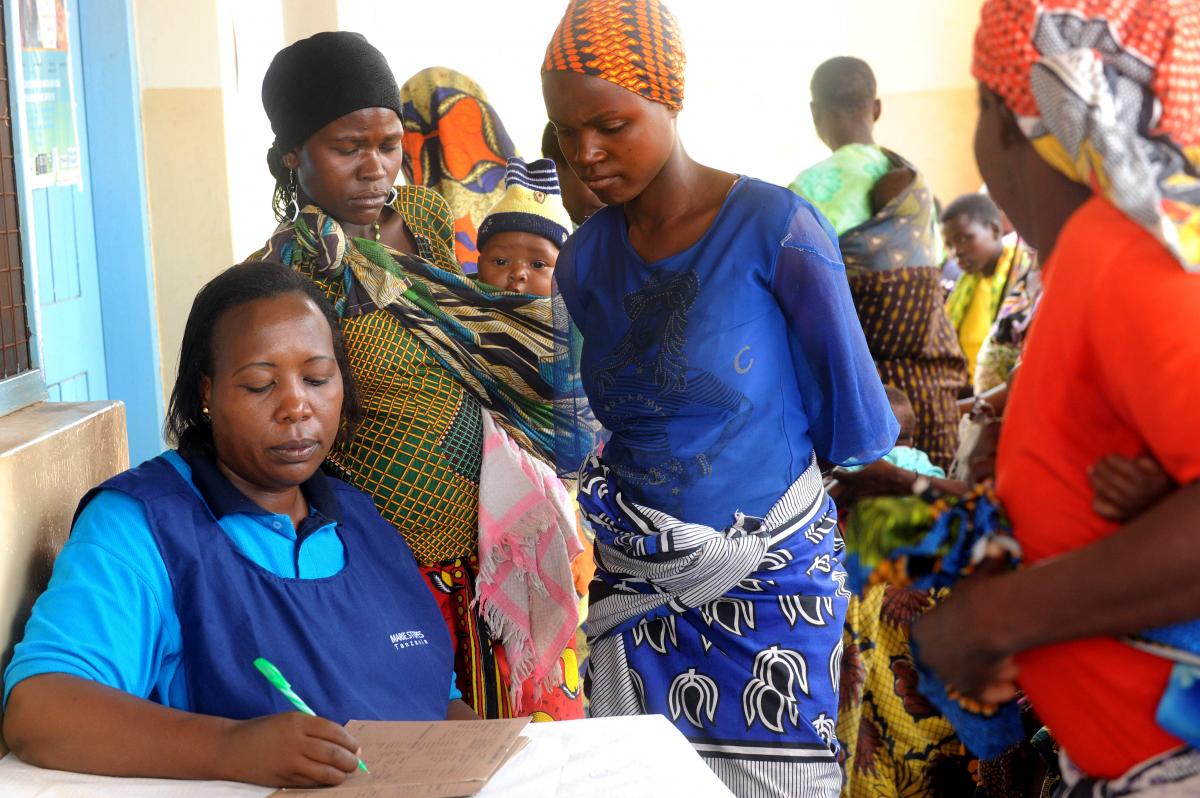
Officials in the Dar es Salaam Region of Tanzania recently took several steps to increase family planning access. In May 2019, the Regional Administrative Secretary (RAS) directed the region’s five municipalities to increase family planning funding and instructed all councils to prioritize postpartum family planning (PPFP) during budget development and review of the fiscal year (FY) 2020-21 budget session. The Regional Medical Officer reinforced this directive in his guidance to the councils’ health management teams in June 2019. The directives support progress toward the region’s goal of a modern contraceptive prevalence rate (mCPR) of 39.5% by 2023 [1]; mCPR currently stands at 33.5% [2].
Previously, financial allocations for family planning in the region’s municipalities ranged between 0.4% to 9% of their health budgets. Yet the average allocation for the municipalities in FY 2018-19 was only 1%. Dar es Salaam, with a current population of six million, is expected to become one of Africa’s megacities with 10 million inhabitants by 2030 [3].
PPFP is one of the four high impact interventions highlighted in the National Family Planning Costed Implementation Plan (NFPCIP) II for all regions, including Dar es Salaam. A World Bank report, “Strengthening Primary Health Care for Results,” showed that 79% of deliveries in Tanzania now take place in health facilities [4]. A rapid assessment of the Dar es Salaam Region showed that, of 127,000 women who delivered at health facilities, only 33,370 (26%) received PPFP methods [5].
Beginning in April, Advance Family Planning partner Health Promotion Tanzania (HDT) led advocacy efforts to engage regional leadership in policy dialogues, using evidence generated from the rapid assessment. These efforts aimed to strengthen commitments to PPFP and use the information in planning and budget processes. HDT then engaged the RAS to persuade him to issue the directive. The directive required all Local Government Authorities (LGAs) to set specific targets for PPFP as one of the high impact interventions in accelerating performance of family planning service provision.
At the same time HDT began advocacy efforts, the President’s Office - Regional Administration and Local Government Authorities issued a separate directive in April 2019 to all regions to prioritize and develop plans for PPFP. This decision reinforced subnational leaders’ commitments. HDT additionally engaged leadership teams of Kigoma, Pwani, and Tabora regions, who committed to improve PPFP and increase youth access to reproductive health services, as part of their effort to implement this directive. Each of these regions also budgeted for PPFP in FY 2019-20.
The dissemination and implementation of the NFPCIP II, a multi-partner collaboration, will continue to require the engagement of decisionmakers at regional and LGA levels to prioritize high impact interventions to attain regional and national mCPR targets. Apart from PPFP, the Dar es Salaam Region will focus on adolescents and youth as well as reducing contraceptive stockouts through annual comprehensive council health plans currently in development.
References
- Ministry of Health, Community Development, Gender, Elderly and Children (MoHCDGEC), President’s Office - Regional Administration and Local Government (PORALG), U.S. Agency for International Development (USAID), and FHI360. The National Family Planning Costed Implementation Plan (NFPCIP) 2019-2023. The Challenge Initiative, 2019. Dar es Salaam, Tanzania, Durham, NC, USA and Washington, D.C., USA. https://tciurbanhealth.org/wp-content/uploads/2019/07/National-Family-Planning-Costed-Implementation-Plan-2019-2023-INSIDE-%E2%80%A2-F....pdf
- Ministry of Health, Community Development, Gender, Elderly and Children (MoHCDGEC) [Tanzania Mainland], Ministry of Health (MoH) [Zanzibar], National Bureau of Statistics (NBS), Office of the Chief Government Statistician (OCGS), and ICF. 2016. Tanzania Demographic and Health Survey and Malaria Indicator Survey (TDHS-MIS) 2015-16. Dar es Salaam, Tanzania, and Rockville, Maryland, USA: MoHCDGEC, MoH, NBS, OCGS, and ICF. https://dhsprogram.com/pubs/pdf/FR321/FR321.pdf
- United Nations, Department of Economic and Social Affairs, Population Division. 2019. World Urbanization Prospects: The 2018 Revision (ST/ESA/SER.A/420). New York: United Nations. https://population.un.org/wup/Publications/Files/WUP2018-Report.pdf
- World Bank Group. 2019. Tanzania - Strengthening Primary Health Care for Results : P152736 - Implementation Status Results Report : Sequence 08 (English). Washington, D.C. http://documents.worldbank.org/curated/en/444761561759104757/pdf/Disclosable-Version-of-the-ISR-Strengthening-Primary-Health-Care-for-Results-P152736-Sequence-No-08.pdf
- Belinda Kijangwa, Health Promotion Tanzania (HDT). 2019. Report on Regional Performance Analysis on Postpartum Family Planning in DSM. Dar es Salaam, Tanzania.

